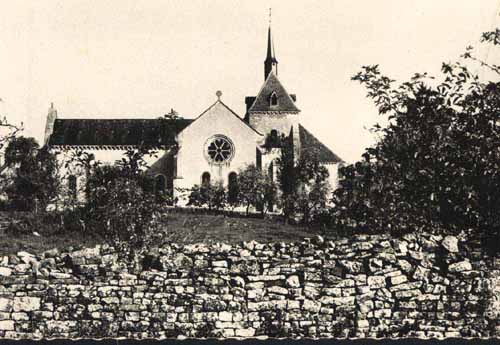 SAINT-PARIZE-LE-CHATEL
SAINT-PARIZE-LE-CHATEL

According to the tradition, the region to which belonged
SAINT-PARIZE-LE-CHATEL would have remained paienne until Vlme century,
it would then have been vanglise by a monk named
PATRICIUS.
The breviary of 1534 known as that PATRICIUS (Holy Patrice) came
with two from his/her companions, Germain and Germanion, of the
monastery of Saint-Pourain, and that it was fixed in a deserted place
where found a Roman temple in ruins, close to a source, called
GENTILICO, place also indicated by certain authors under the name of
GENTILIACO or GENTILLY, which the ones translate by "borough of Nice C
be-with-statement of the paiens, others by" village of Gentili ".
One is not sure that Saint Patrice was a bishop of NEVERS,
although Guy Coquille claims it. Always it is that the
founded abbey by him, becomes property of the Church of
NEVERS. In 888, Charles the Large one confirms with the
aforementioned Church of NEVERS the donation of several churches and
abbeys of which the "Abbey of Saint-Patrice, between the rivers of the
Loire and Allier".
Gentilico, Gentillaco or Gentilly would have, after CHARLEMAGNE,
took the name of Saint-Patrice-le-Chastel or Chasteau, the name of
Patricius and the high castle close of the church at the time feudal.
Little by little, the "tr" of Patrice changed into "R"; the final
syllable "this" was transformed into "ze" and Patrice made
Parize. For a long time however, one indistinctly said
Saint-Patrice or Saint-Parize and not Sainte-Parize as it is heard and
the writing still sometimes.
The employers' festival which celebrated second Sunday of September had
been Saint-Patrice removed for a few years
Foot-note: 1. Saint-Patrice was buried into 555. Before 1793,
one says, his remainders rested in the crypt of the current church,
they would have been dispersed during the
Revolution.
2. The 29 brumaire of the year It of the Republic, SAINT-PARIZE-LE-CHATEL became BRENERY. After Thermidor 9, the borough takes again the name of SAINT-PARIZ-LE-CHATEL